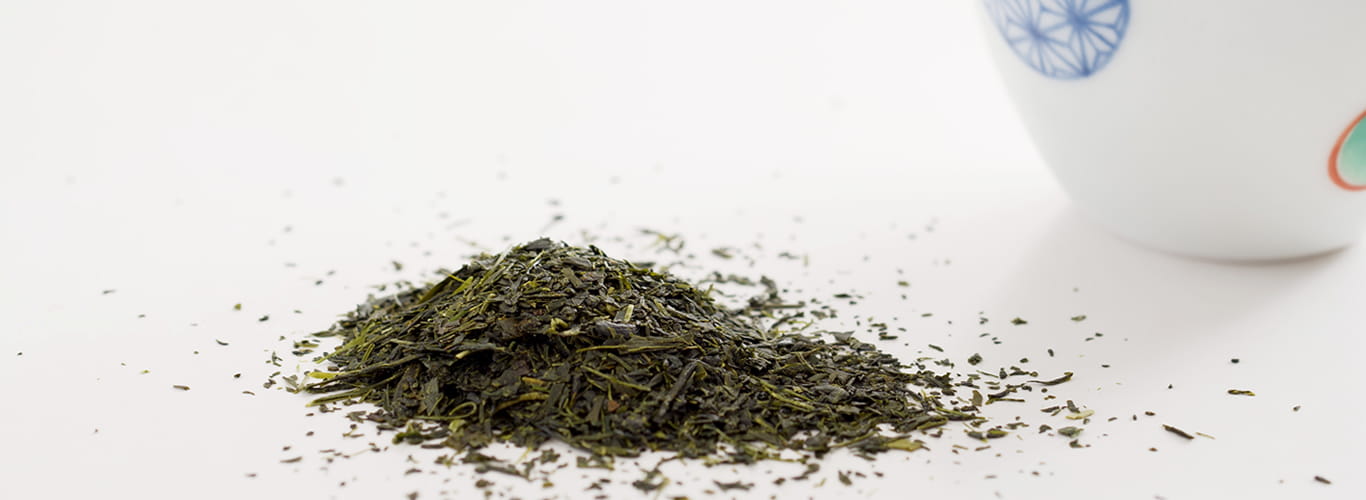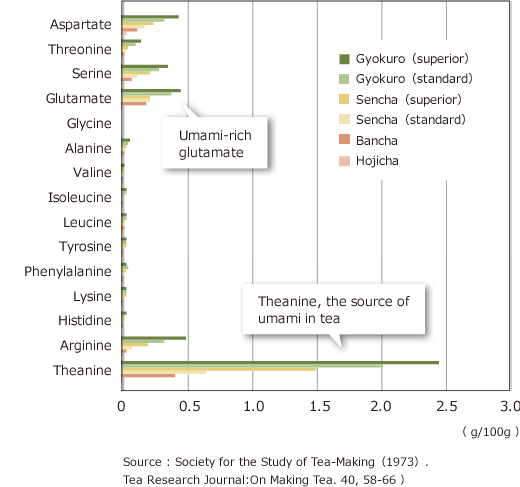Umami-rich green tea
Green tea contains a significant amount of glutamate, a type of amino acid which imparts a pleasant, savoury umami taste.
Anyone who has tried green tea will perhaps have sensed varying levels of sweet, umami, astringent, and bitter tastes, according to blend and variety. The sweet and umami tastes are said to result from the
presence of theanine and glutamate, both types of amino acid, the astringent taste from catechin, and the bitter taste from caffeine.
How is the astringency (catechine) in green tea linked to umami-rich theanine?
It is known that catechin, the astringency-imparting metabolite, is formed from theanine, an amino acid imparting both the umami and sweet tastes, through a reaction with the light of the sun on tea leaves as
they grow. It stands to reason, then, that large amounts of theanine are found in those varieties of green tea said to be rich in umami and sweet tastes, such as the so-called first flush tea (ichibancha), made
from very young tea leaves, picked early, and premium green tea (gyokuro), made from leaves grown in the shade, and thus protected from the catechin-forming sunlight. It is of note that the chemical composition
of theanine is extremely similar to that of glutamate.
Strength of umami differs from tea to tea
Of the different types of green tea shown in the graph, the superior variety of premium green tea (gyokuro) contains the highest levels of both theanine and glutamate, with 2.5g (2500mg)
of theanine and 0.45g (450mg) of glutamate for every 100g. Equally, roasted tea made from the leaves of mature tea bushes (hojicha), was shown to contain only 0.02g (22mg) of theanine and 0.02g (17mg) of
glutamate for every 100g. This amounts to a gap of around 100 times for theanine, and of around 25 times for glutamate, indicating that whilst the premium green tea is rich in umami, the roasted tea is not.
Indeed, Japanese people are skilled at selecting the right tea for every occasion, according to custom and tradition. This means that whilst premium green tea (gyokuro) and green tea (sencha) are chosen to
accompany traditional sweets, it is the roasted tea that will be reached for when a refreshing after-dinner drink is called for.
Making yourself a cup or two of some of the many different green teas now available might be the perfect way to sit back, relax, and enjoy the umami taste.
Reference: Muramatsu, Keiichiro, The Science of Tea (from the Science of Food Series, Asakura Publishing Co., Ltd.)
Levels of Free Amino Acids found in Green tea Varieties




